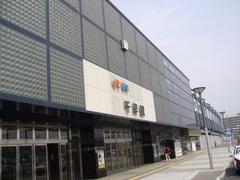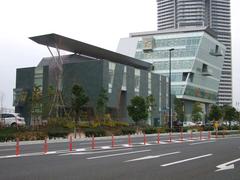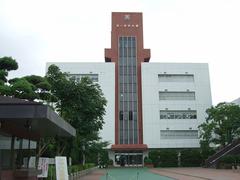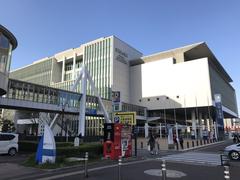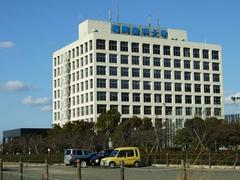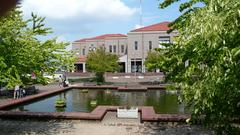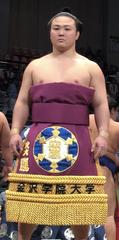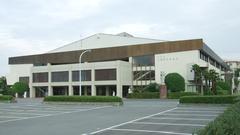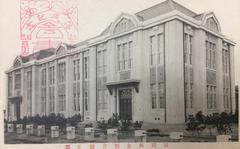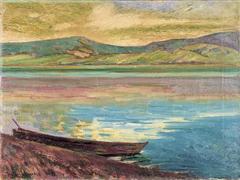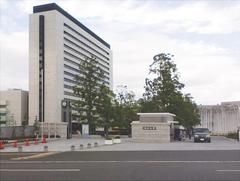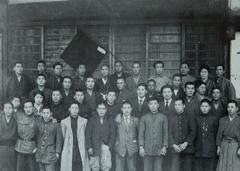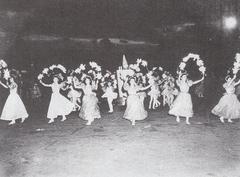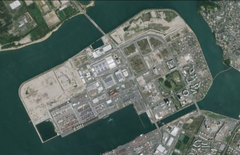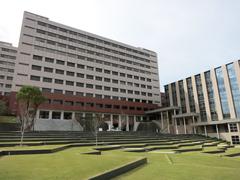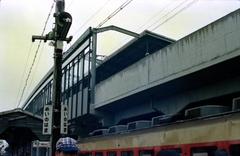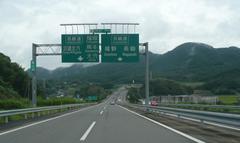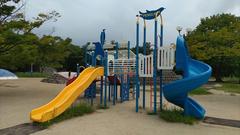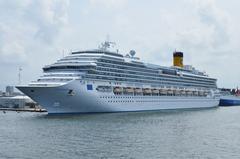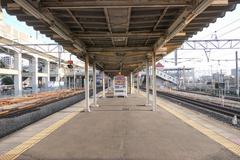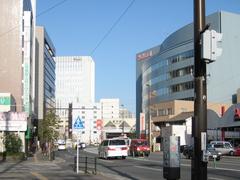Aratsu Visiting Hours, Tickets, and Historical Sites in Fukuoka
Date: 04/07/2025
Introduction to Aratsu Historical Site in Fukuoka
Aratsu, a historic district within Fukuoka City, Japan, offers travelers a fascinating blend of ancient heritage and vibrant contemporary life. Once a pivotal maritime hub connecting Japan to China and Korea, Aratsu has evolved through centuries marked by trade, feudal fortifications, and cultural exchange. Today, visitors encounter preserved shrines, evocative castle ruins, traditional temples, modern amenities, and scenic parks. This guide provides essential information on visiting hours, ticketing, accessibility, local cuisine, and seasonal events, ensuring a comprehensive and memorable experience that honors both Aratsu’s historical significance and its dynamic traditions.
Aratsu’s maritime history and role as a crossroads for international exchange remain evident in its festivals, culinary specialties like Hakata ramen, and the welcoming spirit of local yatai food stalls. Whether exploring sites that commemorate the Mongol invasions, participating in the Hakata Gion Yamakasa festival, or enjoying panoramic city views from Fukuoka Tower, visitors will find attractions suited for diverse interests and accessibility needs. Practical travel tips, including transportation, accommodations, and etiquette, are also included to help travelers navigate the area with confidence.
For those seeking deeper exploration, digital resources such as Crossroad Fukuoka, Secret Attractions, and Japan Talk offer virtual tours, historical insights, and up-to-date event calendars to enrich your planning process.
Table of Contents
- Introduction
- Historical Evolution of Aratsu and Fukuoka
- Cultural Significance and Heritage
- Architectural and Urban Landscape
- Practical Visitor Information
- Notable Nearby Attractions
- Frequently Asked Questions (FAQ)
- Conclusion
- Key Attractions and Seasonal Highlights
- Exploring Aratsu: Visitor Guide to Local Monuments, Culinary Experiences & Traditions
- Complete Visitor Guide to Aratsu: Hours, Tickets, Historical Sites, and Local Tips
- Summary and Travel Tips
- References and Useful Links
Historical Evolution of Aratsu and Fukuoka
Ancient Roots and Strategic Location
Aratsu’s coastal position on Kyushu’s northern shore has made it a vital gateway between Japan and the Asian continent for over a millennium. Archaeological evidence traces local habitation to the Jomon period (c. 14,000–300 BCE), while the Nara and Heian periods saw Hakata Bay near Aratsu become a bustling port welcoming diplomatic missions and traders. This early cosmopolitanism still influences the area today (Crossroad Fukuoka).
Medieval Era: Fortresses and Commerce
The medieval period brought the rise of powerful clans and the construction of Fukuoka Castle (Maizuru Castle) by Kuroda Nagamasa in the 17th century. Positioned near Aratsu, the castle controlled maritime access and trade, with the surrounding castle town thriving as a hub for samurai, merchants, and artisans (Secret Attractions, Travel Buddies).
Modernization and Urban Development
Following the Meiji Restoration, Fukuoka underwent rapid modernization, which included railway expansion, modern port construction, and infrastructural growth. Aratsu evolved alongside the city, integrating its traditional roots with urban amenities (Crossroad Fukuoka).
Cultural Significance and Heritage
Maritime Heritage and International Exchange
Aratsu’s history as a seafaring district is celebrated in local festivals, community events, and its cuisine. The influence of centuries of international trade is evident in customs, language, and food culture (Crossroad Fukuoka).
Religious and Spiritual Sites
Significant shrines and temples, such as Atago Shrine, offer panoramic city and sea views and host seasonal festivals and rituals that preserve traditional practices (Secret Attractions).
Festivals and Living Traditions
Major festivals include the Hakata Gion Yamakasa (July), renowned for its float races, as well as Mitama Festival and Ohori Park fireworks. These events provide immersive experiences of local culture (Japan Talk).
Architectural and Urban Landscape
Blending Tradition and Modernity
Aratsu features a mix of traditional wooden homes and contemporary architecture. Urban planning balances heritage preservation with modern needs. Nearby, Canal City Hakata offers a modern shopping and entertainment experience (Wanderful Horizons).
Parks and Green Spaces
Proximity to Ohori Park and Momochi Seaside Park offers opportunities for relaxation, cherry blossom viewing, waterfront recreation, and picturesque sunsets (Travel Buddies).
Practical Visitor Information
Visiting Hours and Tickets
- Fukuoka Castle Ruins: Open 24 hours; free admission.
- Atago Shrine: 6:00 AM–6:00 PM; free entry.
- Dazaifu Tenmangu Shrine: 6:30 AM–6:00 PM; free entry.
Most outdoor sites are free; some museums and exhibitions require tickets. For guided tours or special events, check official websites or local tourist centers for current schedules and prices.
Guided Tours and Accessibility
Guided walking tours of Aratsu and historic sites are available through tourism offices or online platforms. Main streets and parks are generally wheelchair accessible, with some older shrines and temples having limited access—advance inquiries are recommended.
Photographic Spots and Virtual Resources
- Fukuoka Castle Ruins: Seasonal cherry blossoms and historic stonework.
- Atago Shrine: City and bay panoramas.
- Yanagawa Canals: Traditional boat rides.
Virtual tours and interactive maps are available via Crossroad Fukuoka.
Seasonal Considerations
Spring and autumn offer the most comfortable climate and beautiful scenery. Fukuoka is less affected by typhoons than other regions, making it a reliable year-round destination (Wanderful Horizons).
Local Cuisine
Sample Hakata ramen at local stalls or the Ramen Stadium in Canal City, along with fresh seafood, udon, and tempura (Wanderful Horizons).
Accommodation and Amenities
Options range from luxury hotels to budget hostels, with traditional ryokan available for cultural immersion (Wanderful Horizons).
Safety and Etiquette
Fukuoka is safe for travelers. Observe customs such as removing shoes indoors and respecting religious site protocols. During festivals, follow organizer guidelines and maintain public decorum.
Notable Nearby Attractions
- Fukuoka Castle Ruins: Historical site with cherry blossoms (Secret Attractions).
- Dazaifu Tenmangu Shrine: Shrine to the deity of learning (Secret Attractions).
- Yanagawa Canals: Traditional boating experiences (Secret Attractions).
Frequently Asked Questions (FAQ)
Q: What are typical visiting hours for Aratsu’s historical sites?
A: Outdoor sites are open from early morning to early evening; admission is often free.
Q: Are tickets needed for historical sites?
A: Outdoor sites are typically free; some museums and guided tours require tickets.
Q: Is Aratsu accessible for wheelchairs?
A: Major streets and parks are accessible; some older temples have limited access.
Q: How can I buy tickets for tours?
A: Through tourism offices, online platforms, or hotel concierges.
Q: When is the best time to visit?
A: Spring and autumn for climate and scenery; July for major festivals.
Key Attractions and Seasonal Highlights
Major Historical and Cultural Sites
- Toka Ebisu Shrine: 9:00 AM–5:00 PM, free. Festival in January (GoFukuoka).
- Kaigenji Temple: 8:30 AM–5:00 PM, free. Best in cherry blossom season.
- Mongolian Invasion Historical Museum: 9:00 AM–6:00 PM, 500 yen adults (Japan Guide).
- Nureginu Zuka & Meibonji-itabi: Open dawn–dusk, free; guided walks available.
- Myorakuji & Myotenji Temples: 8:00 AM–5:00 PM, free.
- Hakata Traditional Performing Arts Centre: 10:00 AM–7:00 PM; admission varies (GoFukuoka).
- Fukuoka City Archeology Center: 9:00 AM–5:00 PM, closed Mondays; 300 yen adults.
Modern Landmarks
- Fukuoka Tower: 9:30 AM–10:00 PM; 800 yen adults (Japan Activity).
- Momochi Seaside Park: Year-round, free.
- Canal City Hakata: 10:00 AM–9:00 PM (MyTravelBuzzG).
Seasonal Highlights and Events
- Spring: Cherry blossoms (late March–early April), Kyokusui no En poetry ceremony.
- Summer: Hakata Gion Yamakasa (July), fireworks festivals.
- Autumn: Foliage, Miyajidake Shrine “Path of Light,” Hojoya Festival.
- Winter: Illuminations, Tamaseseri and Setsubun festivals.
Culinary Highlights
- Yatai Stalls: Evening street food culture—ramen, yakitori, oden.
- Seasonal Foods: Sakura sweets in spring, cold noodles in summer, mushrooms in autumn, hot pots in winter.
Practical Tips
- Transport: Subway, buses, and bike rentals (Japan Activity).
- Accessibility: Most sites offer wheelchair access.
- Language: English signage is common; basic Japanese is helpful.
- Etiquette: Bow at shrines, purify hands, keep noise low.
Exploring Aratsu, Fukuoka: Monuments, Cuisine, and Cultural Traditions
Visiting Key Monuments
- Kushida Shrine: 6:00 AM–6:00 PM, free. Venue for Hakata Gion Yamakasa (Adventure Backpack).
- Guided Tours: Walking tours often include temples, shrines, food stalls, and artisan workshops (Welcome Fukuoka).
Culinary Experiences
- Yatai Culture: Food stalls open from 5:00 PM to late, serving Hakata ramen, yakitori, and more (Zoom Japan).
- Signature Dishes: Hakata ramen, burdock udon, fresh seafood, mentaiko, and local sweets (Trip101).
Cultural Traditions and Festivals
- Hakata Gion Yamakasa: July festival with float races (Adventure Backpack).
- Other Festivals: Hakata Dontaku in May, Hojoya in September (Fun Japan).
- Arts & Crafts: Hakata ningyo, Hakata-yaki pottery (Britannica).
- Tea Ceremony: Participate at local shrines (Over Your Place).
Practical Information
- Transport: Subway and bus access; 1-Day Subway Pass recommended (Living Nomads).
- Best Seasons: Spring and autumn for mild weather; July for festivals.
- Language: English common in tourist areas; basic Japanese helpful.
- Markets & Shopping: Nagahamasengyo Fish Market, local shops with regional products (Japan Welcomes You).
Complete Visitor Guide to Aratsu: Hours, Tickets, Historical Sites, and Local Tips
Access and Transportation
- From Fukuoka Airport: Subway Kuko Line to Tenjin/Hakata, then to Aratsu via Ohorikoen/Tojinmachi (Japan Travel).
- Hakata Station: Subway and buses connect to Aratsu (TM2JP).
- IC Cards: “Hayakaken,” “Suica,” “ICOCA” accepted on transport.
Accommodation
- Range from luxury hotels to hostels and ryokan (Visit Inside Japan).
Money and Payments
- Japanese Yen is standard; cash is preferred at small eateries and yatai.
- ATMs readily available; tipping is not customary.
Connectivity
- Free Wi-Fi in major areas; pocket Wi-Fi recommended (Visit Inside Japan).
Safety and Health
- Fukuoka is very safe; English-speaking medical facilities are available.
Local Customs
- Remove shoes indoors, bow as greeting, use both hands for money exchanges.
Seasonal Weather
- Hot, humid summers; mild winters. Best to visit in spring (cherry blossoms) and autumn (foliage) (PlanetWare).
Accessibility
- Major sites are barrier-free; staff is generally helpful.
Emergency Contacts
- Police: 110 | Ambulance/Fire: 119 | Tourist Info: Hakata Station/Tenjin (Gofukuoka).
Useful Apps
- Japan Official Travel App, Google Maps, Hyperdia, Fukuoka City Official Tourism (Fukuoka Heritage Week).
Summary and Travel Tips
Aratsu, set within Fukuoka’s vibrant cityscape, is a destination where ancient history, cultural traditions, and modern attractions converge. From ports that once connected Japan to the continent, to castles, shrines, and a lively food scene, Aratsu offers a profound travel experience. With accessible transportation, diverse accommodation, and detailed visitor resources, exploring Aratsu is both convenient and rewarding. Utilize digital tools like the Audiala app and official tourism platforms such as Crossroad Fukuoka and Secret Attractions to plan your journey. Embrace the balance of heritage and modernity for an unforgettable visit.
References and Useful Links
- Crossroad Fukuoka
- Secret Attractions
- Travel Buddies
- GoFukuoka
- Japan Guide
- Japan Talk
- Adventure Backpack
- Zoom Japan
- Japan Travel
- Visit Inside Japan
- PlanetWare
- Japan Activity
- MyTravelBuzzG
- Living Nomads
- Trip101
- Fun Japan
- Britannica
- Over Your Place
- Japan Welcomes You
- TM2JP
- Gofukuoka
- Fukuoka Heritage Week
